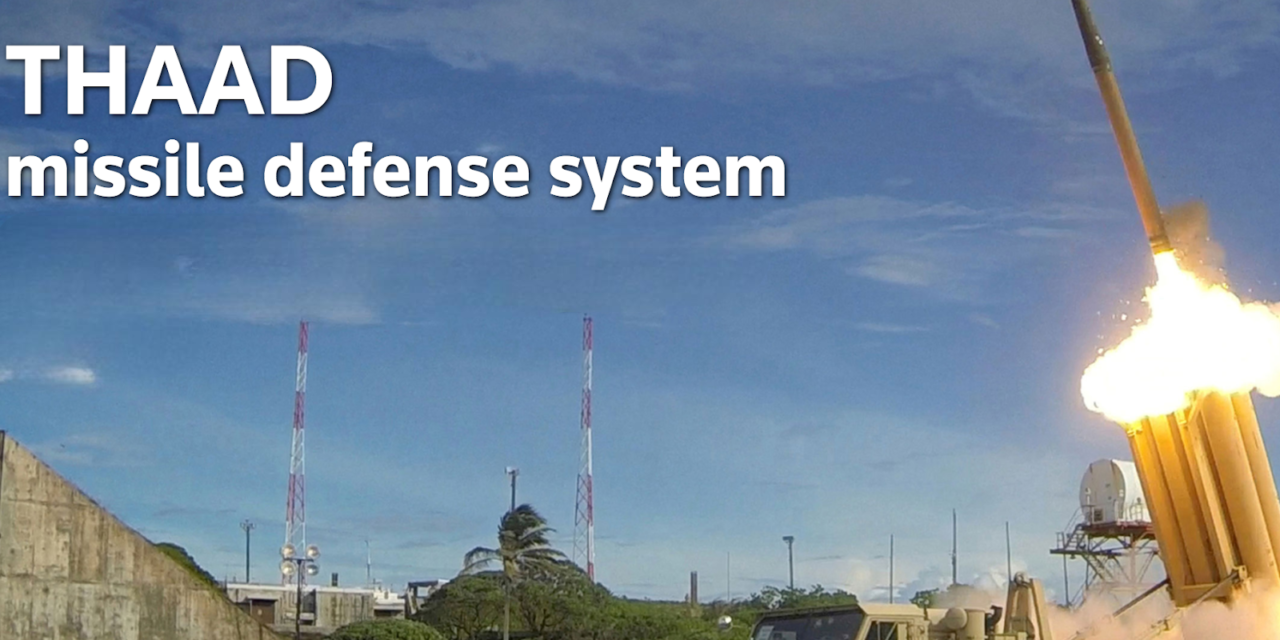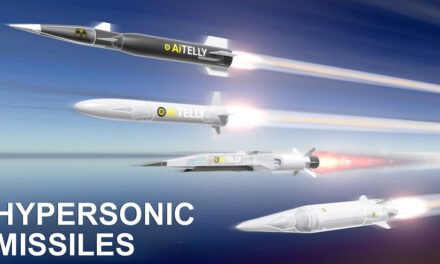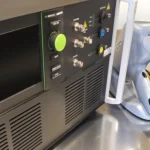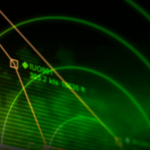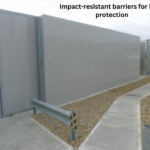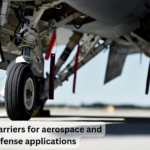The Terminal High Altitude Area Defense (THAAD) system is a highly advanced missile defense system designed to intercept and destroy short-, medium-, and intermediate-range ballistic missiles during their terminal phase of flight. It uses a hit-to-kill approach, relying on kinetic energy from direct impact to destroy incoming threats. Here’s a detailed look at how THAAD works:
1. Components of the THAAD System
The THAAD system comprises several integrated components that work together to detect, track, intercept, and destroy incoming missiles:
A. AN/TPY-2 Radar
- Purpose: Detects and tracks incoming missile threats.
- Key Features:
- Highly advanced X-band radar with long-range detection capabilities.
- Provides high-resolution tracking data to identify and classify incoming missiles.
- Supports early warning and discrimination of actual warheads from decoys.
B. Command and Control (C2)
- Purpose: Acts as the system’s brain, analyzing radar data and coordinating the launch and guidance of interceptors.
- Key Features:
- Links with other missile defense systems, such as Patriot or Aegis, for integrated air defense.
- Relays threat data to operators and manages the engagement sequence.
C. THAAD Interceptors
- Purpose: Neutralize incoming ballistic missiles.
- Key Features:
- Lightweight, agile, and highly maneuverable.
- Equipped with an infrared seeker for precise tracking and target identification.
- Relies on a hit-to-kill mechanism, where kinetic energy from impact destroys the target.
D. Mobile Launchers
- Purpose: Deploy and launch interceptors.
- Key Features:
- Truck-mounted for rapid deployment and flexibility.
- Each launcher can hold up to eight interceptors.
E. Support Equipment
- Includes power generators, communication systems, and other tools to sustain operations in remote or austere environments.
2. Operational Workflow
THAAD operates in a multi-phase process to intercept incoming missile threats:
A. Detection and Tracking
- Radar Activation:
- The AN/TPY-2 radar continuously scans the sky for missile launches.
- It detects the infrared signature and trajectory of an incoming ballistic missile.
- Threat Identification:
- The system identifies the target and differentiates between the missile’s warhead and decoys.
- Threat data is sent to the command and control center for analysis.
B. Command and Control
- Threat Evaluation:
- The C2 system determines the missile’s trajectory, impact point, and interception window.
- If the missile poses a threat, the system selects the optimal interceptor and timing for engagement.
- Engagement Coordination:
- The C2 system issues commands to the launcher to fire the interceptor.
C. Interception
- Interceptor Launch:
- The interceptor is fired from the mobile launcher toward the incoming threat.
- Midcourse Guidance:
- The interceptor uses data from the radar and C2 system to adjust its course during flight.
- This ensures the interceptor remains on a collision path with the target.
- Terminal Guidance:
- In the final phase, the interceptor’s onboard infrared seeker takes over to track the missile with precision.
- The interceptor maneuvers for a direct collision, destroying the target through kinetic energy.
3. Key Features of THAAD
A. Hit-to-Kill Technology
- Destroys missiles by colliding with them at extremely high speeds, ensuring the warhead is neutralized without detonation.
- Avoids the risk of chemical or biological warhead dispersion.
B. High-Altitude Interception
- Engages targets at altitudes of up to 150 km (93 miles), outside the Earth’s atmosphere.
- Provides a wide-area defense and intercepts missiles before they reach their intended targets.
C. Mobility
- THAAD is truck-mounted, allowing it to be rapidly deployed and repositioned as needed.
- Can be operational within hours of deployment.
D. Integration with Other Systems
- Works seamlessly with other air and missile defense systems, such as Patriot PAC-3 and Aegis BMD, to provide layered defense.
- Can integrate with global missile defense networks for early detection and coordinated response.
4. Deployment and Applications
- Strategic Defense:
- Protects critical infrastructure, military assets, and civilian populations from missile attacks.
- Tactical Flexibility:
- Can be deployed in remote locations or near conflict zones.
- Used for both national and regional defense.
- Global Deployments:
- Operated by the U.S. and allies, including deployments in South Korea, Guam, and the United Arab Emirates (UAE).
- Often used in conjunction with other defense systems for comprehensive protection.
5. Advantages of THAAD
- Versatile Defense:
- Effective against a wide range of ballistic missile threats, including short-, medium-, and intermediate-range missiles.
- Layered Protection:
- Complements other missile defense systems to create a multi-tiered shield.
- High Precision:
- Hit-to-kill technology ensures minimal collateral damage.
- Rapid Deployment:
- Mobile launchers and modular components make THAAD adaptable to dynamic threats.
6. Challenges and Limitations
- Cost:
- Expensive to produce and deploy; each interceptor costs millions of dollars.
- Limited Engagement Time:
- Effective only during the terminal phase of a missile’s trajectory, leaving a smaller interception window.
- Saturation Attacks:
- Can be overwhelmed by large-scale missile attacks or simultaneous launches.
- Geopolitical Tensions:
- Deployments in regions like South Korea have sparked concerns from neighboring countries like China and Russia.
7. Notable Deployments and Use Cases
- South Korea:
- THAAD was deployed to counter North Korean missile threats.
- Guam:
- Protects U.S. military bases in the Pacific.
- United Arab Emirates (UAE):
- Provides regional defense against Iranian missile threats.
8. Future Enhancements
- Improved Radar Systems:
- Enhancements to detect and track hypersonic threats.
- Advanced Interceptors:
- Development of interceptors capable of handling hypersonic glide vehicles (HGVs).
- AI Integration:
- Using AI for faster threat detection and improved interception accuracy.
Conclusion
The THAAD system is a cornerstone of modern missile defense, offering unparalleled precision, mobility, and adaptability. Its ability to intercept ballistic missiles at high altitudes and its integration into layered defense architectures make it an indispensable tool for national and regional security. Despite its challenges, ongoing advancements ensure that THAAD remains a vital part of future missile defense strategies.
Hashtags
#THAADSystem #TerminalHighAltitudeDefense #MissileDefenseTech #AdvancedDefenseSystems #THAADTechnology #MissileInterception #MissileInterceptors #HighAltitudeDefense #PrecisionMissileDefense #ThreatNeutralization #BallisticMissileDefense #EndgameInterceptors #AdvancedRadarTech #LongRangeInterception #AirAndMissileDefense #NextGenDefenseTech #SmartDefenseSystems #InnovativeDefenseSolutions
